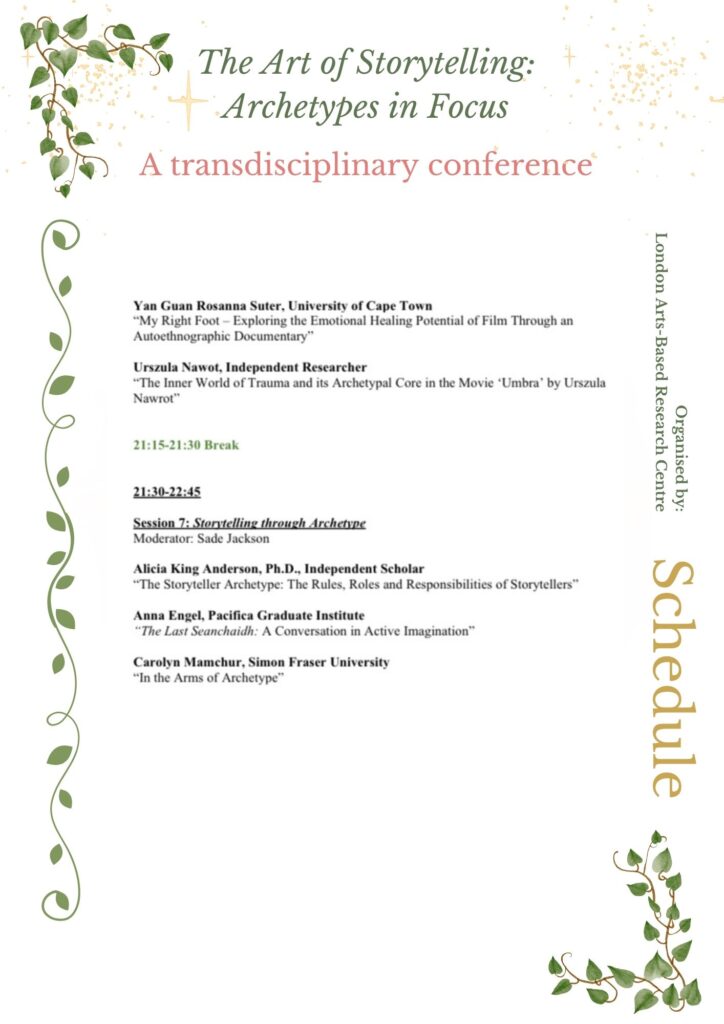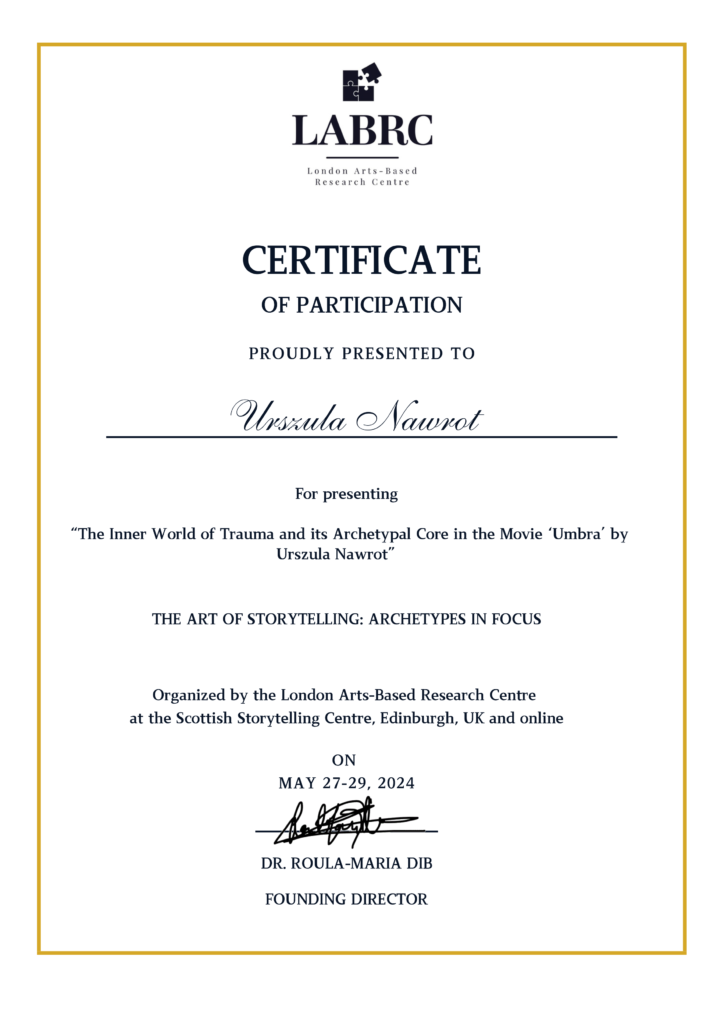Urszula Nawrot prezentowała referat: 'Trauma and its Archetypal Core in the Film Umbra by Urszula Nawrot’ na konferencji naukowej 'The Art of Storytelling,’ organizowanej przez London Arts-Based Centre. Konferencja miała miejsce w Edynburgu w Anglii.



Abstract:
’Trauma and its Archetypal Core in the Film Umbra by Urszula Nawrot
„UMBRA / ECLIPSE OF THE MOON” is a sumptuous, intoxicating visual journey through the subconscious of the soul as memories from things past, present and perhaps even from the future collide to reveal secrets buried within a woman’s mind and heart.
Trauma can be realistically portrayed in film by focusing on the everyday problems of the victims, accusing the oppressors, denouncing injustice, or raising trauma’s social and legal aspects. Trauma can also be described through symbolic imagery. It is then that we have a chance to reach the inner world of trauma and describe the indescribable, elusive, and irrational. The essence of the symbol is to combine what is conscious and unconscious, rational and irrational. Symbols merge different layers of reality without merging them into one. A symbolic narrative can, therefore, take place in several realities simultaneously. The interpretation of a symbol is the choice of one level of reality as the dominant one. In my film “Umbra” I speak symbolically of child sexual abuse and how it affects adult life. I ask philosophical questions about the truth and sense of existence, as well as theological questions about love and God in the face of experiencing evil. The story of child sexual abuse becomes an archetypal tale of evil initiation.
This is possible thanks to telling the story through symbolic images: “Whoever speaks in primordial images speaks with a thousand voices: he enthralls and overpowers… he transmutes our personal destiny into the destiny of mankind, and evokes in us all those beneficent forces that ever and anon have enabled humanity to find a refuge from every peril and to outlive the longest night”. C.G Jung.
Thus, the symbolic images will serve as a bridge between the protagonist’s internal traumatic structures, represented by objects from her real life, and the world of the archetype.
My presentation will focus on the emotional complexes related to relational trauma and sexual abuse shown in my film, along with their archetypical core. The film uses images from the inner world of a real person. Then I would like to present the results of my research into the reception of archetypal images by film recipients.
URSZULA NAWROT
